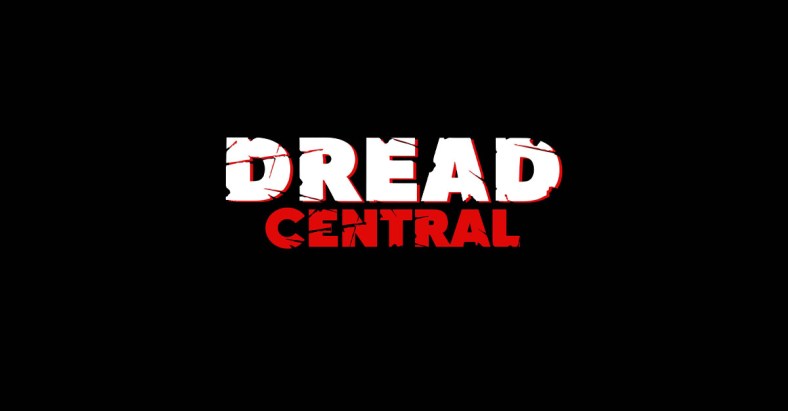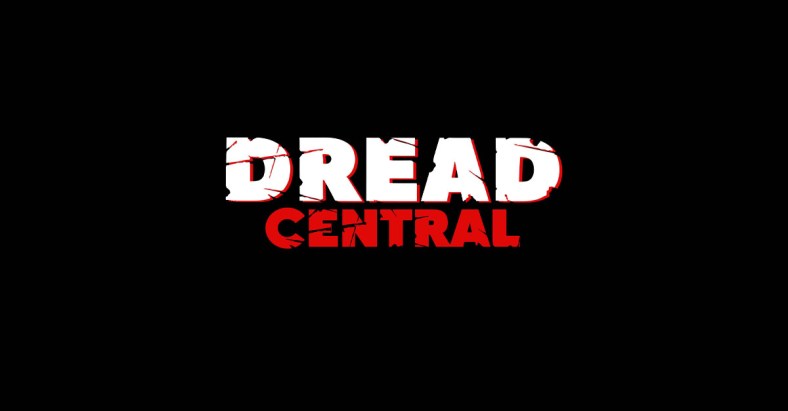Adam Robitel on Directing Insidious: The Last Key: “I Went in Swinging For the Fences”

“Fear comes home,” is one of the taglines for the fourth installment in the Insidious horror film series. But it could fit any of them. And that’s probably what makes the story worth revisiting again and again…the terrifying idea that we are not safe in our homes. That, and the character of Elise (Lin Shaye), the caring and kindly psychic medium who helps families plagued by evil. But what about her own family? Right, you guessed it: plagued by evil! Insidious: The Last Key is a prequel, taking place before part one, and even delving deep into Elise’s childhood.
Since series mainstays James Wan and Leigh Whannell would not be directing this one…who could take the reins? None other than Adam Robitel, who made such a splash with his eerie found-footage possession thriller The Taking of Deborah Logan. We caught up with Robitel at the press day for the film in Hollywood and asked him what it was like to take a leap from the indie world into an established franchise.

Dread Central: What a coup, to get to direct an Insidious movie! How did you come on?
Adam Robitel: Well, I had known James Wan socially through Lin Shaye. I had been up to dinners at her house and had met James. He was really lovely, early on when I was trying to get my first film made, and was super cool and supportive when it came out publicly. And so I was just taken by that and when Leigh Whannell decided he wasn’t going to direct Chapter Four, my name was on a short list at Blumhouse – I guess they liked the movie too, The Taking of Deborah Logan. I went in really hard, I went in swinging for the fences. I did a look-book and animated story board. In the first draft it was a psychological thriller that didn’t have a demon, and I said ‘Guys, you know I really think you need a big-bad for Insidious. When I think of Insidious I think of the lipstick demon, the man who couldn’t breathe.’ And so out of that I had done some concept art with my friend Jacob where we did a sort of version of Keyface with the key fingers. So yeah, I kind of went in swinging and then had to be vetted by Jason Blum. I think there was some initial concern that going from found footage to scripted, three-point editing, that I really had to prove I could do that. That was why I went at it 110%. Looking back, it was amazing, because I got into debt making my first film and so it was like, ‘This is going to work out or I’m going to go home and do something else.’
DC: Insidious is an established world. Is it at all intimidating to step in?
AR: It is. And look, I consider James and Leigh to be like the Michael Jordan of modern supernatural horror, so there were big shoes to fill. I quickly realized – I couldn’t out-Wan the Wan. James does what James does, so well. And I was approaching every set up and every shot like, what would James do, and after about a week I was like, you know what – what would Robitel do? And what I love about Chapter Four is. It so much about human abuse and about the things that we do to ourselves whether is parents or family. And to me that’s way scarier than any demon that can come out from under a bed, right. So that as a way in was really interesting. The whole movie is a meditation on resentment and the fact that not only do your parents press your buttons, they installed them. So when I leaned into the material, it freed me up to not worry as much about – Leigh Whannell was super cool and was next to me the whole time and if there was anything where I was going off the rails or if it didn’t feel like it was a typical Insidious kind of thing – because Insidious is a different universe. It’s not Judeo/Christian imagery, it’s inverted crucifix and pea soup vomiting demons, it’s much more carnivalesque. And again getting back to the Keyface, the fantastical element of Keyface, it’s a great sandbox to play in. And at the end of the day, it’s really up to the fans if they accept it into the pantheon of Insidious.
DC: To what do you attribute the enduring appeal of the franchise?
AR: It’s usually a family drama. Chapter One it’s Rose Byrne and Patrick Wilson not really understanding what’s happening. And in this film, it’s really the core of the family unit of Elise, Specs and Tucker. I think Lin Shaye is so beloved because she’s such an underdog character. She just inherently wants to help people. And I get to tell you, knowing Lin personally, she is so filled with gratitude about this sort of renaissance she’s been having. And I think you can feel it in the movie. There’s a sense of joie de vivre in her presence that she has that is palpable. And I’m all for it. I think there’s such a dearth of older female actresses – and they hit a certain age and there’s just no roles. And for her to be so beloved is such a great thing.
DC: And you also have one of my favorite character actors in the film, Bruce Davison.
AR: I’ve always been a fan of Bruce. He is just one of those actors who is super raw and can just tap in and go. He was Senator Kelly in X-Men. I did a stunt job in X-Men and I met him on the set of X-Men. I felt that Christian is a little younger than Elise, he stayed with the trauma longer than she did and you’d feel it. He’s got that shock of white hair. I wanted somebody who could hold the screen with Lin and go toe to toe and there are just very few actors who could do that and Bruce was definitely one of them.
DC: I feel like I remember The Taking of Deborah Logan being rated R. How was it going into the PG13 world?
AR: It’s funny you should ask that because I just came off a thriller that we shot in Capetown and again, it was also going for a PG13 and I think the immediate thing you feel is language, right? So, you can’t drop F-bombs. You’re allowed one F-bomb in a PG13 movie as long as it’s not sexual. So that’s the first impediment. Because any situation you find yourself in where you think you’re going to die, I think we’re going to drop and F-bomb. But short of that I think Insidious movies aren’t about gore and gratuitousness, it’s about what you don’t’ see. And so it didn’t really hinder the creative process in that sense. Now mom getting strangled was very violent and we had a more violent version of that, and we had to shave some of it, but not to the detriment of the movie. I just thing the MPAA has certain guidelines too. It’s weird what we deem inappropriate and I think we have a misappropriation – we’re okay with gun violence but not sex. But for the most part I didn’t feel much of an impediment on this movie. And you want your movie to get seen so most people, most departments want a PG13 movie just because of the sheer numbers. Although somebody was telling me recently, those kids, they know how to get into a PG13 movie, even the younger age, they get into the horror movies. I like R movies because you can really go really intense but it’s not at the sake of being exploitative – it has to be – the story, is the story, is the story. And getting back to your question. I think the humor and sort of Laurel and Hardy quality of these movies makes it less bleak and makes it entertainment. I think we’re in such a cynical time that people want to laugh, as well as get scared. And I think that’s why people keep coming back.
DC: How do you straddle that balance between horror and humor? Do you find it in the editing room?
AR: Yeah, that’s absolutely right. You do find in post, you know when things aren’t working or if anything undercuts a scare sequence – a lot of times Leigh, being such an expert at it, he knows how to stay in the scare sequence and go to the decompression scene afterwards where you get a joke or a laugh or a punch line. But there were times where we just had to edit out or even just pacing things – a lot of that you learn in post, you see what doesn’t work. But it’s a fine line. You go from a guy with a mullet into crazy ghost situations and it’s like “does that take you out”. Ultimately, as long as people are entertained – I remember James saying something earlier when I was trying to make my first film – he said “they’ll forgive everything if it’s scary”.
DC: What’s next? More horror?
AR: I just look for good material. A good script is hard to come by and I would love to get into the Sicario, midlevel thrillers that are dark and twisted. Like that would be my happy medium. I just like movies that are really dark, explorations of human drama. So the film I just did was very art department heavy but very cool and very psychological. Who knows. That’s the beauty of this industry. I’m just super grateful to be here.
Insidious: The Last Key hits theaters January 5, 2018.
Synopsis:
Parapsychologist Elise Rainier and her team travel to Five Keys, N.M., to investigate a man’s claim of a haunting. Terror soon strikes when Rainier realizes that the house he lives in was her family’s old home.

Categorized:News

